The latest discovery in the ongoing excavations in the Ancient City of Stratonikeia, known as the city of eternal loves and gladiators, was a “Dancing Muses” statue, an iconic figure from ancient mythology.
According to the statement made by the Ministry of Culture and Tourism, the statue found in the works carried out in the ancient city is this unearthed statue is the sole original Hellenistic period piece attributed to a work famously replicated during the Roman period.
Today the ancient city is located in Eskihisar village of the Yatagan district of Mugla Province. It is one of the cities of the Ancient Caria Region. With an area of 7 km, it is one of the largest marble-built cities in the world. It is the only city-state with two major sanctuaries dedicated to Hekate and Zeus.
Historically, the “Dancing Muses,” considered one of the muses born from Zeus and Mnemosyne’s union, was reputedly crafted by Philiskos, a renowned sculptor from the second century B.C. While there are numerous Roman period reproductions of this piece throughout Anatolia and Greece, the newly discovered statue from Stratonikeia stands out as the only authentic work by Philiskos from the Hellenistic era.
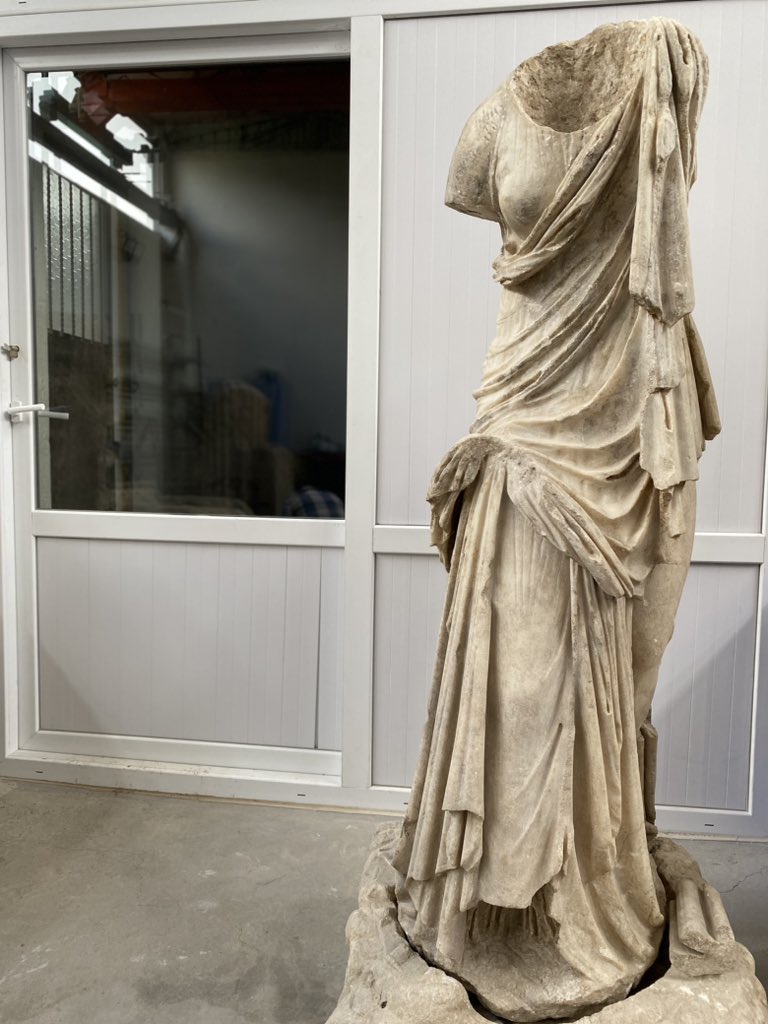
Information about Philiskos, the renowned sculptor from the Hellenistic Period, is quite scarce. Philiskos was known for his work in bronze sculpture, particularly in creating statues and sculptures of athletes and gods. He was active during the 4th century BCE and hailed from Rhodes, a center for artistic innovation during that era.
Philiskos is often mentioned in historical records and texts for his mastery in portraying movement and anatomical accuracy in his sculptures. Unfortunately, none of his original works have survived, leaving us to rely on written accounts and references by other ancient authors to understand his artistic prowess and contributions to the field of sculpture during the Hellenistic Period.
Therefore, the discovery of the statue in Stratonikeia is significant for archaeologists because it demonstrates Philiskos’ artistic presence in the ancient city during the Hellenistic period.
The statue and pedestal were found during excavations inside the frigidarium of the Roman bath in Stratonikeia. However, the head and arms of the sculpture were notably absent from the findings.
Previously, a replica of this revered statue was discovered in the Roman baths of the ancient city of Perge, as well as another in Rhodes, demonstrating its widespread replication during the Roman period.
The statue will be exhibited at the Muğla Museum after the work to be done.
Cover Photo: Stratonikeia and Lagina Excavation from social media account.

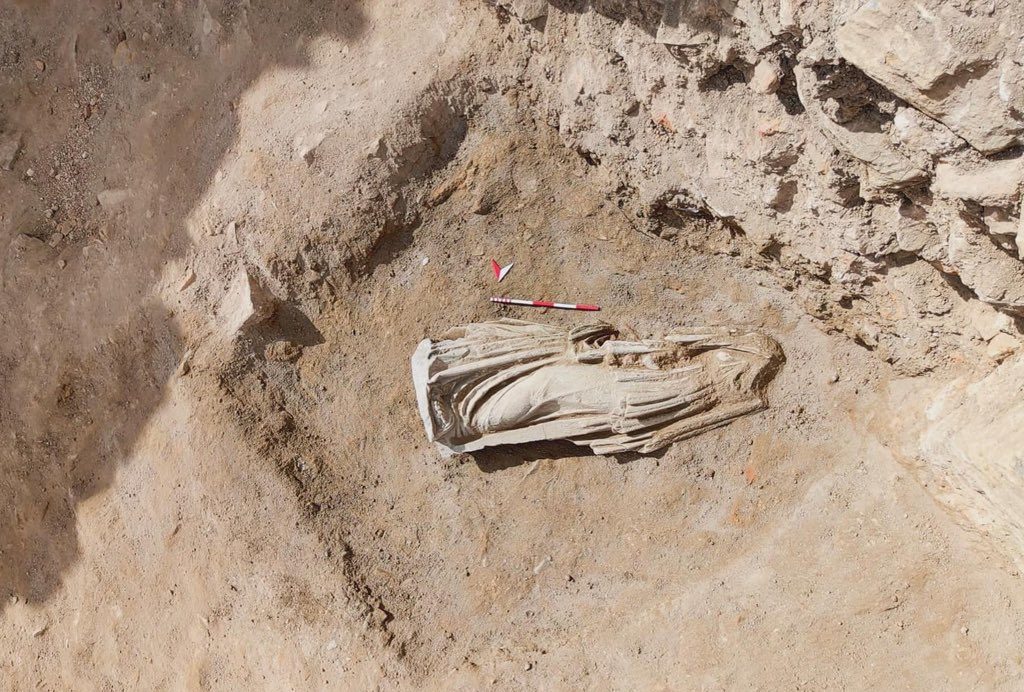
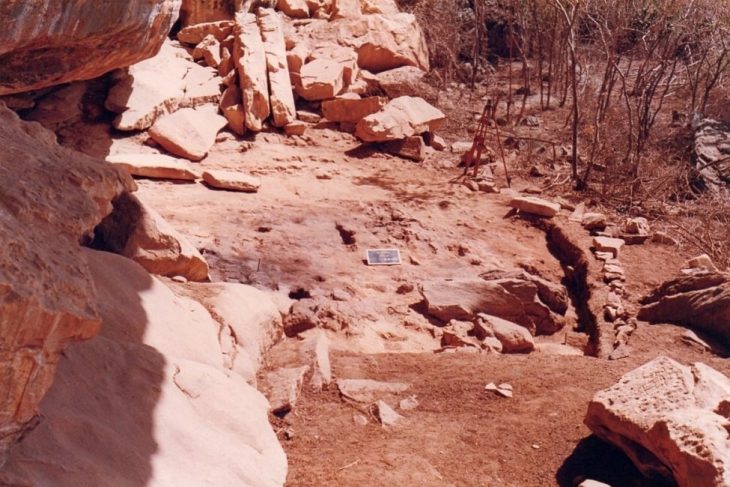


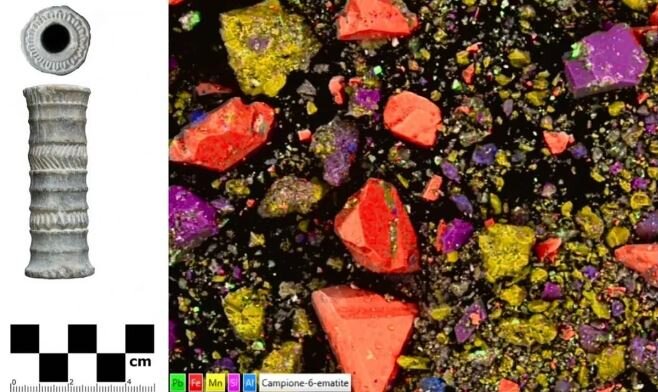




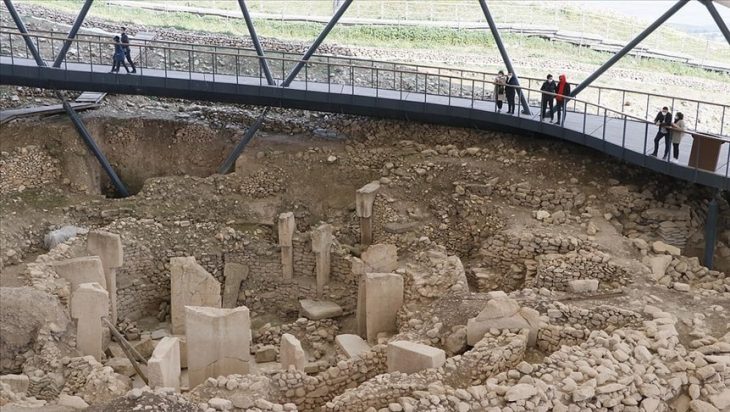

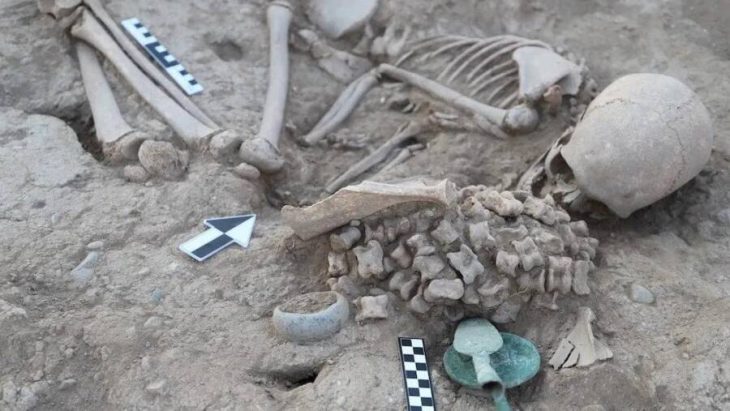
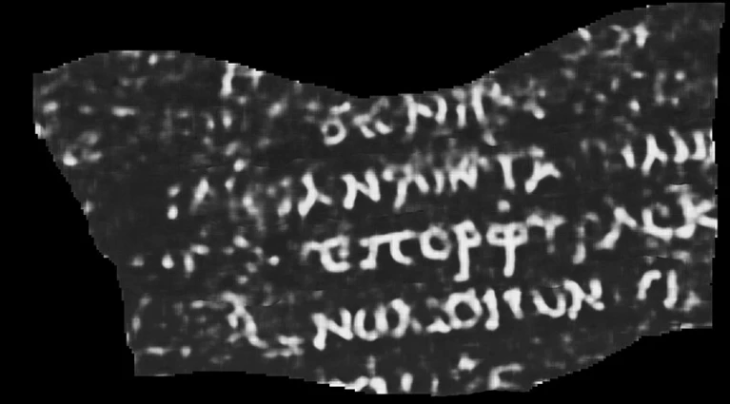

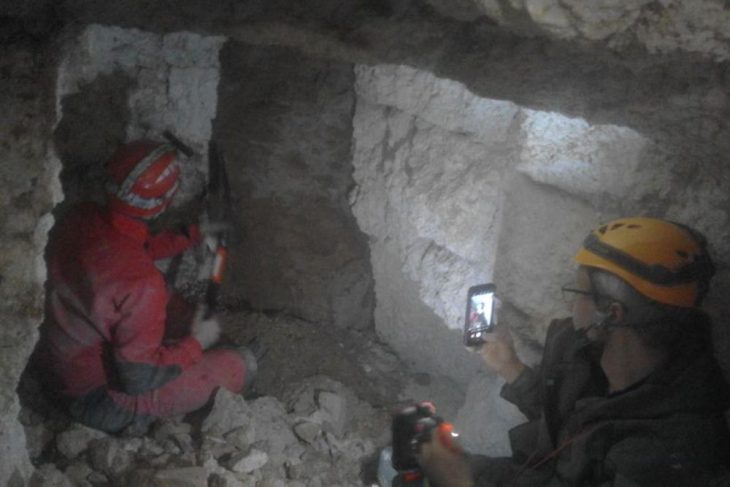
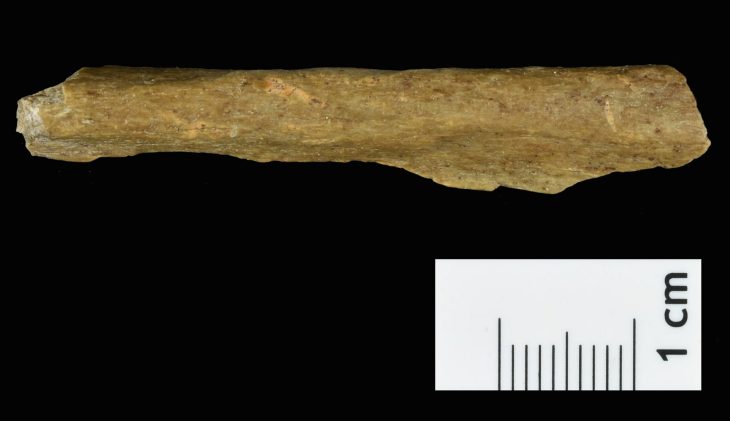
I believe that the article: ‘A Dancing Moses statue 2175 years old was found in the ancient city of Stratonikeia, known as the city of eternal loves ‘, should be ‘ A Dancing Muse’ (not Moses).
Was this a ‘spell check’ error? Amusing!
Thanks
Arkeonnews.net is extremely interesting